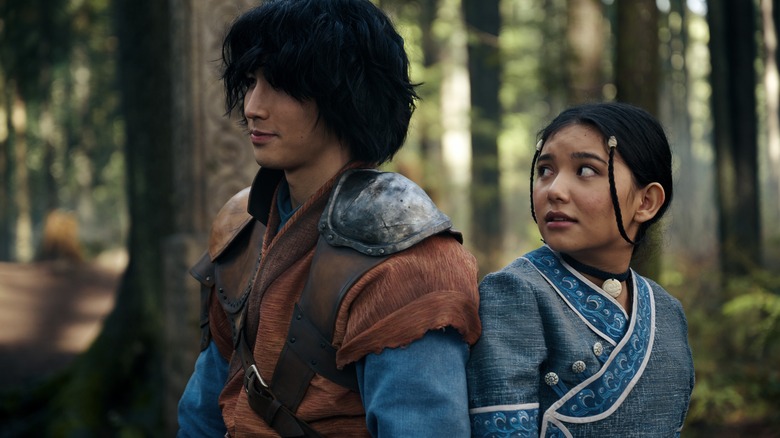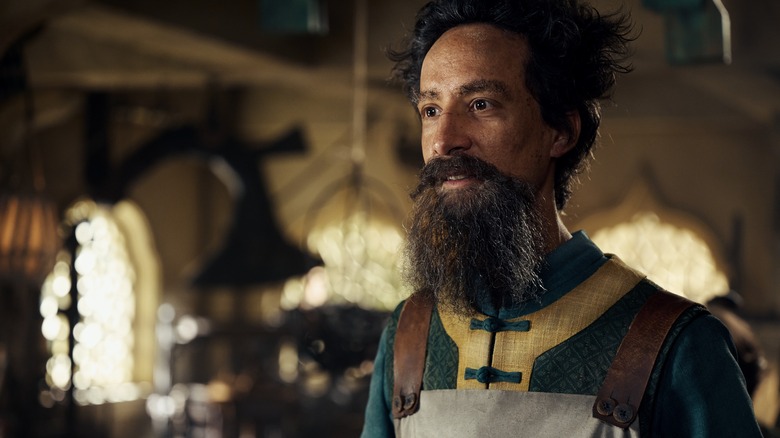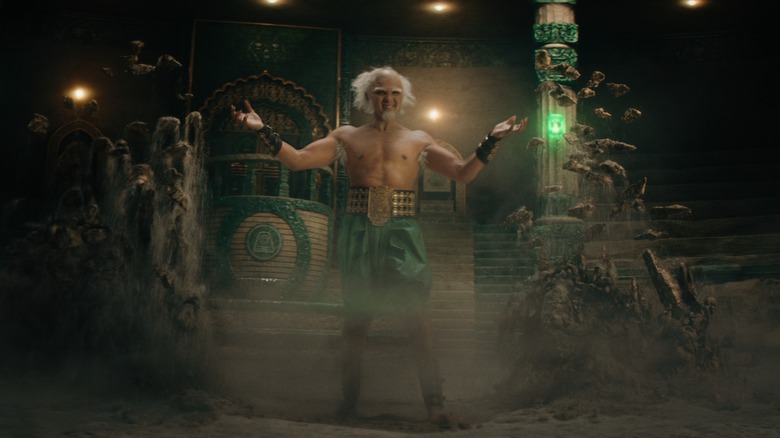Avatar: The Last Airbender's Biggest Change From The Original Explained
Warning: This article contains spoilers for episodes 3 and 4 of "Avatar: The Last Airbender"
With apologies to "Star Wars" fans, there are few sacred texts held up with such rapturous praise that can rival the protectiveness fans of "Avatar: The Last Airbender" harbor towards the animated show. Debuting almost two decades ago, the classic story of a mystical chosen one with the power of all four elements tasked with saving the world from a century-long war has taken on mythic proportions in the time since. And, not surprisingly, such acclaim has stacked the odds against any adaptation, whether it be M. Night Shyamalan's doomed feature film from 2010 or Netflix's attempt to bring the series back to life in live action.
The results have been mixed, as I laid out in my review for /Film, but that's really only scratching the surface. There are several factors behind the Netflix show's highs and lows alike, making it far more complicated than a simple case of the creative team (led by writer/executive producer Albert Kim) not adhering 100% to everything that came before. Changes to this adaptation were inevitable, particularly as a consequence of taking 20 total episodes from season 1 and boiling them down to their very essence in the space of eight episodes in the new series. And, what's more, at least some tweaks and readjustments actually play out better than they did before — from witnessing the fateful destruction of the airbenders and Aang's (Gordon Cormier) frozen exile to Sokka's (Ian Ousley) less cartoonish and bumbling personality (though he still has his fair share of silly moments) to the very different take on Ken Leung's Commander Zhao.
Yet one creative overhaul is sure to inspire debate: combining Jet's freedom fighters, the Omashu arc, and Teo/The Mechanist into one big jumble of missed opportunities.
Streamlined for streaming
To state the obvious, it was never realistic to expect a streaming series on Netflix to perfectly recreate every standalone episode from the original "Avatar: The Last Airbender." Not only would such a 1:1 adaptation make a live-action show entirely pointless, but it simply wasn't feasible given the time constraints of this new and very different serialized format. So, to adjust to this new obstacle, the writing team apparently decided to streamline the animated show's unwieldy first season wherever possible. When viewers got up to episode 3, titled "Omashu," some were in for a rude awakening upon realizing that both the Teo/Machinist and Jet's freedom fighters storylines have been folded together into events taking place at Omashu.
In the animated series, Team Avatar encounters the mighty earthbending city of Omashu early on. Aang realizes that not all those he knew a hundred years ago are gone, though it takes him some time to realize that the eccentric King Bumi was once his childhood playmate, now testing him in all new ways. Several episodes later, the trio have a run-in with a young rebel named Jet, a Robin Hood-like figure who leads a band of freedom fighters against the Fire Nation. He takes his guerrilla tactics entirely too far, however, and intends to sacrifice innocents if it means dealing his enemies a fatal blow. Here, our heroes learn an important lesson about staying true to what's right — even when confronted with shades of gray. And, finally, a detour to the Northern Air Temple leads to an encounter with Teo and his father, the Mechanist ... and a crash course into the mistakes we make when protecting those we love.
In the Netflix series, however, all three of these arcs can't help but feel shortchanged.
Missed opportunities
Right from its inception, the Netflix series had one major disadvantage compared to the original: no room to breathe. A tight eight-episode season, even with episodes twice the length of each installment of the source material, meant that fans could expect many fan-favorite moments and storylines to fall by the wayside. In the streaming era, anything that doesn't advance the plot tends to be ruthlessly excised. These three arcs were obviously important enough to include to some extent in this new version of "Avatar: The Last Airbender" ... but not enough to merit the time and space that they deserved, apparently.
It's a shame, too, because not everything about this revamped plot goes to waste. Actor Sebastian Amoruso plays Jet and, thanks to some expanded backstory details that further brings the parallels between himself and Katara closer together, he brings a wounded (if misguided) sense of nobility to a tragic character. As for Danny Pudi as the Mechanist, the "Community" star shines as a fractured figure who has compromised his own ideals in the name of protecting his disabled son Teo (Lucian-River Chauhan). And as King Bumi, Utkarsh Ambudkar fully understands the assignment and lends an outsized, scenery-chewing presence amid a surprisingly bleak pair of episodes.
So where does it all go wrong? More than in any other point in the season, one can practically feel the narrative wheels grinding to a halt in order to accommodate three distinct arcs that never had anything to do with one another. And in the attempt to parcel out precious screen-time to each and every guest star, our heroes hardly get a chance to learn and grow from these encounters. The final result? An overstuffed mess that was done much better before.
"Avatar: The Last Airbender" is now streaming on Netflix.


